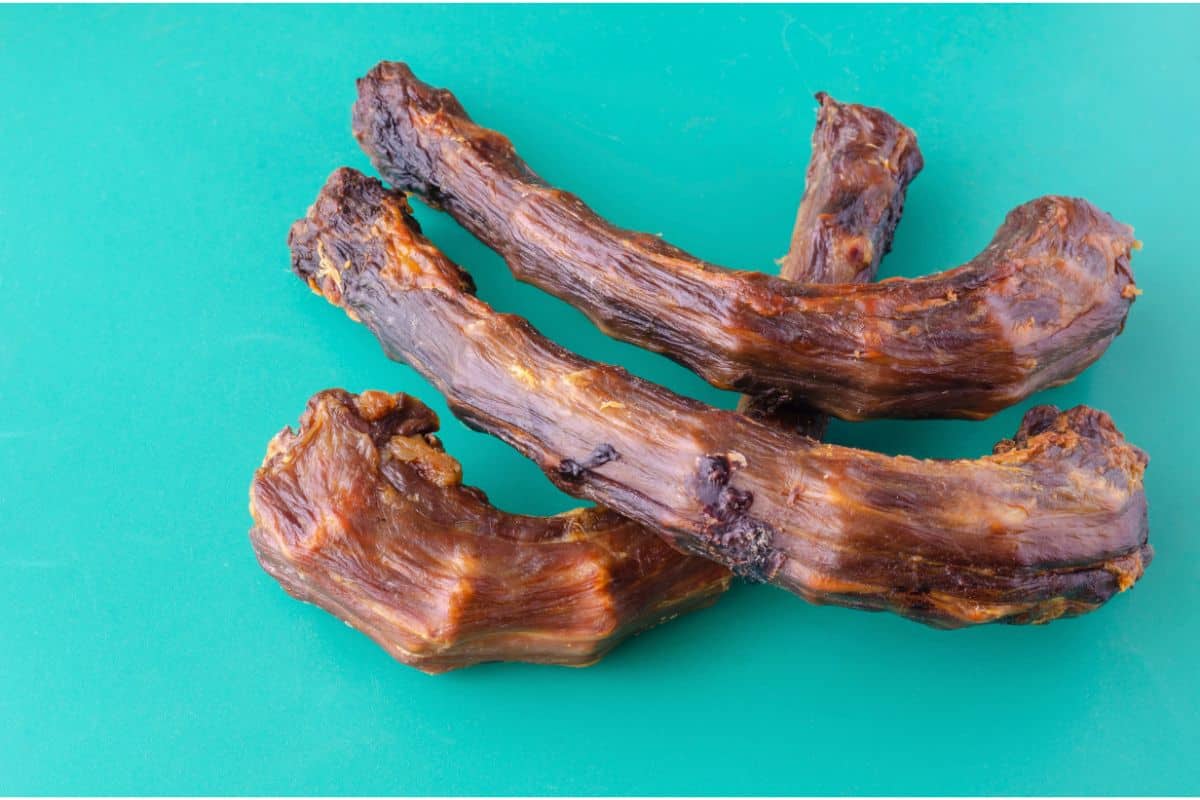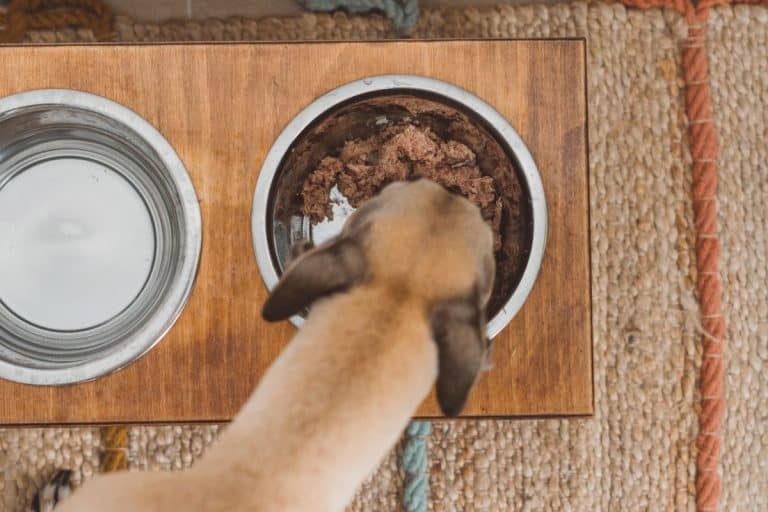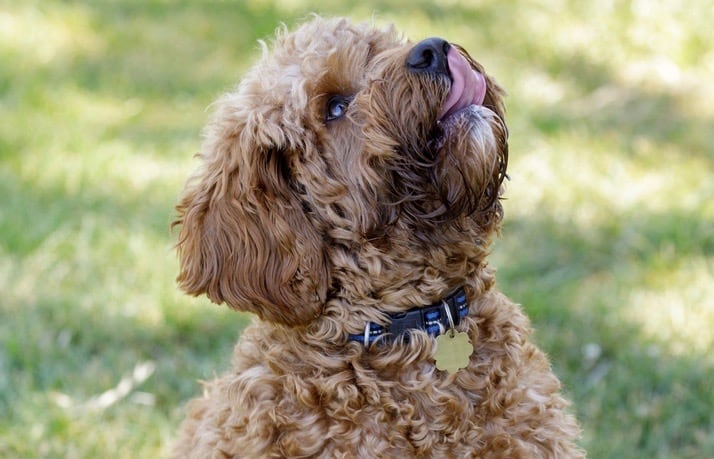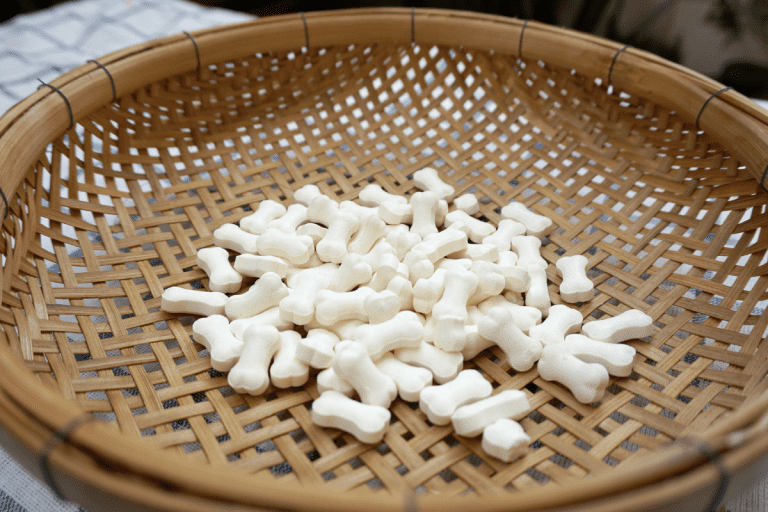Turkey Necks For Dogs: How To Feed
There is a reason why so many dog owners feed their four-legged friend’s turkey necks. In fact, there’s a multitude of reasons why turkey necks are considered such a value to a dog’s diet.
Along with offering a stack of nutritional benefits, they make a very good food chew too.
However, with all their associated benefits there are also some must-do’s and do-not’s that come with turkey necks. This is why we are here to dispel every myth that surrounds turkey necks.
On top of that, we will highlight exactly how to feed turkey necks to your dog to keep them safe and ensure they are getting the full whack of associated benefits.
They may not be the nicest thing to handle or look at, but once you find out all the good that feeding turkey necks can do for your pooch, you will quickly get over their more raw side.
What Are Turkey Necks?
Turkey necks that are processed for pet feeding are actually cleaner than you might think. The head, skin, and crop have been removed. What is left is a cleaned-up skinless neck in its entirety.
This consists of the turkey spine and all the bones and vertebrae that it is made up of. The windpipe, neck muscles, and connective tissues are also left behind which is a big reason why dogs love chowing down on them so much.
Just like turkeys, turkey necks range in size, with some of the longest reaching 12 inches. Typically, they will be more like 8 – 10 inches. At this size, turkey necks are still longer than chicken and duck necks.
This is a big reason why they are more widely given to dogs (especially large and medium dogs).
How To Feed Turkey Necks To Your Dog?
The most common way that people feed their dogs turkey necks is whole. If your dog is large enough to handle a full turkey neck, then this is considered the best way for them to eat it.
The reason be is that it can actually be a good workout for them to chew through the bones, cartilage and muscle tissues. Feeding them whole can also do wonders for their dental health, but more on that later.
The other way to feed turkey necks to your dog is to grind them up first. Ground turkey necks are particularly useful for smaller dogs who would have little chance of chewing through a whole turkey neck.
Of course, this means they won’t get the same workout and teeth clean, but at least they can still gain many of the associated health benefits.
Are Turkey Necks Safe To Feed Your Dog?
It’s an unfortunate truth that some dog owners are under the assumption that turkey necks are dangerous. However, this is only partly true as it is cooked turkey necks that are a serious threat to dogs.
Just like leftover chicken bones are a big no-no to feed dogs so to are cooked turkey necks. The good thing about this is that turkey necks are sold raw, not cooked.
Raw turkey necks pose no risk to dogs because their bones are soft and brittle. When a dog chews on raw a raw turkey neck the bones will crush in such a way that they are 100% safe for dogs large enough to comfortably eat them.
Why Are Cooked Poultry Bones A Danger For Dogs?
So now you know why raw turkey necks pose no threat to dogs, but why are cooked poultry bones so dangerous? Cooked poultry bones just like the bones found in turkey necks can be a serious health risk for dogs.
This is because the cooking process turns poultry bones into incredibly sharp and pointed shards once chewed. Think of them as hard shards of glass and that is along the lines of what cooked poultry bones turn into once chewed by a dog.
For obvious reasons, this can be very serious which is why you should never feed your dog cooked turkey necks or any cooked poultry bone for that matter.
Are All Turkey Necks The Same?

Although all turkey necks sold for the purpose of dog feeding are considered safe, there’s no denying that some are safer than others.
The difference lies in the way they have been processed. Learning which is which and what to look out for when buying turkey necks is imperative.
Dehydrated Turkey Necks
Dehydrated turkey necks are readily available and widely purchased all across the US. You can buy them from your local pet store or a larger online retailer.
One of the best aspects of dehydrated turkey necks over 100% raw turkey necks is their extended best before date. The dehydrating process can extend the shelf life of a turkey neck up to 6 – 8 months when properly stored in the freezer.
However, some considerations do need to be made when shopping around for dehydrated turkey necks. For instance, if the turkey necks have been air-dried at too high a temperature then their bones may become brittle and prone to shattering as a result.
This is why you should only buy dehydrated turkey necks with guidance on their air-drying technique. Avoid high temperatures and seek out turkey necks that have been air-dried for a longer period at a lower temperature.
Raw Turkey Necks
Raw turkey necks are the safest type of turkey neck to feed your dog. They are readily available from your local butcher, supermarkets, and in their thousands from online pet food retailers.
Some online pet food companies even specialize in raw products which give customers more confidence in their food safety practices.
Food safety is the big disclaimer for raw turkey necks as they can go off very quickly under the wrong temperatures and incorrect handling.
For this reason, buying them directly from a butcher or a reputable raw pet food supplier is your best bet. Most dog owners will buy raw turkey necks in bulk and then freeze what they don’t use in the first couple of days.
Resist the temptation to cook the turkey necks. Although this will increase the time that they are safe to feed your dogs it will also make their bones brittle and dangerous.
Another option with raw turkey necks is to buy them already frozen. This is a clever idea as it allows you to unfreeze a small batch of turkey necks every couple of days while the rest of the necks remain frozen and safe.
One last consideration is to ensure that you follow strict food safety and hygiene practices when handling fresh and raw turkey necks.
If you leave them out of the fridge for too long at room temperature then, even after refrigeration, they may spoil sooner than expected.
Freeze-Dried Turkey Necks
Freeze-dried turkey necks are less common than the raw and dehydrated varieties. Freeze-dried turkey necks go through a process known as lyophilization.
Lyophilization is a low-temperature dehydration process that freezes the turkey necks and lowers their pressure. The frozen moisture (ice) is then further removed by a process known as sublimation.
Because it is a more involved way of preserving turkey necks, it is considered the more expensive option when compared to raw and even dehydrated turkey necks.
The hike in price is a big reason why fewer manufacturers are freeze-drying turkey necks and why fewer customers are buying them.
That being said, it is a highly efficient and effective way of preserving turkey necks for pet consumption while retaining all the nutritional benefits associated with them.
Also, unlike the dehydrated variety, freeze-drying has no chance of causing a turkey neck’s bones to turn brittle and become a danger for your dog.
What Are the Benefits Of Turkey Necks For Dogs?
Now that you know everything there is to about the different types of turkey necks available for your dog, it’s time to have a look at their associated health benefits.
The nutritional health benefits of incorporating turkey necks into a dog’s diet are quite astounding. Loaded with protein, glucosamine, chondroitin, calcium, phosphorous, and other beneficial minerals, it’s easy to why so many dog owners are already feeding their dog’s turkey necks regularly.
Below are the most beneficial things that the regular consumption of turkey necks can do for your dog.
Muscle Development
Turkey necks are incredibly rich in protein. Protein is super beneficial compound that promote muscle development, healthy skin, and a healthy coat for dogs.
What’s more, protein also helps dogs to produce hormones and enzymes which go along with ensuring they remain as healthy and as happy as can be.
Turkey necks are also known for their high-fat content. This means they are also a valuable source of energy for dogs. Turkey neck fat can also help dogs to absorb fat-soluble vitamins and minerals.
The essential fatty acids found in turkey neck fat will also to their part in making your dog’s skin and coat healthy. Last but certainly not least, these essential fatty acids are also tasked with reducing inflammation as well.
Joint And Mobility
Glucosamine and chondroitin may be a bit of a mouthful to say, but their benefits more than makeup for their long-winded scientific names.
There have been many studies undertaken to prove the effectiveness that glucosamine and chondroitin have on the joint health and mobility of pets and all have shown positive effects.
Just like us humans, arthritis is a common bone disease for dogs of a certain age. Veterinarians will actually recommend a dog who suffers from arthritis take these supplements to help ease pain and improve overall bone health.
Turkey necks can help reduce the risks of a dog developing arthritis through their high levels of glucosamine and chondroitin.
Instead of having to get a pill of the stuff down your dog’s throat, you could introduce turkey necks now and ward off bone disease and the subsequent supplements required to combat it later on down the track.
Dental
Dental issues are a very common occurrence in dogs. In fact, it is estimated that three-quarters of all canines in the US will suffer from some kind of dental disease in their lifetime.
Thankfully, there are preventative measures that you can implement now to ensure your dog isn’t part of this staggering statistic.
Although brushing your dog’s teeth twice a day may not be the most practical thing for you, brushing their teeth a few times a week can make a huge impact on their overall dental health.
Another way of mitigating dental disease is to feed your dog turkey necks on a regular basis. Turkey necks are considered healthy dog dental chews.
When a dog chews a turkey neck they are unassumingly cleaning its teeth at the same time. Removing plaque and tartar build-up on teeth is just one of the many benefits of feeding your dog turkey necks.
This is especially useful for dog owners with fussy dogs who would rather profusely kick and bark than have their teeth brushed.
Mental And Physical Health
Who would have thought that chewing on a turkey neck can have an impact on a dog’s health and wellbeing? The physical act of chewing on a turkey neck can provide a source of enjoyment and entertainment for energetic dogs.
If you’ve never seen a dog eat a turkey neck it isn’t exactly a walk in the park. They need to plant both of their front feet o the bone and gnar down the turkey neck slowly.
The fact that a dog has to work for their turkey neck means it makes them feel good about themselves. It is also handy for dogs who are prone to chewing everything around the home that they shouldn’t.
If they come to know that they will be given a turkey neck from time to time, they may not be so enamored with the rouge slipper they noticed hiding under the sofa.
Turkey necks are also a great way of breaking up the monotony of a dog diet. All owners are prone to falling into a routine of offering their dog the same meal each and every day.
Slipping a turkey neck into the weekly eating schedule will ensure your dog is excited about their diet and when they are next presented with a turkey neck.
How Many Calories Are In A Turkey Neck?
Turkey necks have a moderate to the high percentage of calories. This makes a lot of sense when you consider that they are both high in protein and fat.
You will find that dehydrated turkey necks have a higher calorie intact per kilogram than raw turkey necks. This is because, without their moisture, they have a high concentration of fat.
In general, you should expect a turkey neck to have in the vicinity of 150 and 250 calories. At the higher end are especially large fresh necks and the dehydrated variety.
The lower end will be the more moderately sized fresh turkey necks. This high-calorie percentage does pose a risk for overweight dogs who need to watch what they eat.
How Often Should You Feed Your Dog Turkey Necks?
Yes, turkey necks are associated with multiple health benefits for dogs. However, this doesn’t mean that feeding them a turkey neck every day is going to keep the vet away. In fact, there is such a thing as too many turkey necks.
Obviously, the exact amount is open for interpretation as it really does come down to the dog in question, but there are still some general rules to go by.
If your dog is a particularly active breed that is always chasing this and digging up that, then giving them three turkey necks every week should be no issue.
If, however, your dog isn’t one of the more active breeds, then one or two turkey necks a week should be more than enough. Another consideration is the size of your dog.
For giant dog breeds like Dobermans and Great Danes, they should have no issues putting away multiple turkey becks every week.
If, however, your dog is considered medium-size at best, then one or two turkey necks are plenty for them.
Should You Feed An Overweight Dog Turkey Necks?
On account of their high calorie and fat content, it is not recommended to feed an overweight dog turkey necks.
When you consider that a single turkey neck can have up to 25% of an average-sized dog’s recommended daily calorie intake, it makes a lot of sense why.
Another one to watch out for is feeding them to mostly inactive dogs. If your dog is particularly old and inactive, feeding them regular turkey necks is an easy road to a growing weight problem.
Sure, feeding the occasional turkey neck to your overweight dog isn’t going to have huge ramifications for their overall health.
Should You Feed Your Puppy Turkey Necks?
Although it may sound like a good idea on paper on account of their high protein and fat content, feeding a turkey neck to your puppy is not a good idea. Two of the biggest reasons are their large size and the fact that they are full of bones.
Puppies don’t have the required jaw strength to safely chew through turkey necks. Even if you stick to feeding them a raw turkey neck, this can still become a choking hazard for a puppy.
Puppies also need to follow very strict diets that have a considered amount of calcium and phosphorous in them. Turkey necks could throw their diet out of whack and cause an imbalance.
An imbalance of this nature has the potential to increase a puppy’s chances of developing bone and joint problems as they grow.
Conclusion
So there you have it. You are now all the wiser on turkey necks and the do’s and do not’s that surround feeding them to dogs. We hope this article has been a useful guide to discovering just how amazing turkey necks can be for dogs.
Of course, you can just give your furry best friend free reign to eat as many turkey necks as they can. But a turkey-neck treat here and a turkey-neck treat there, and they will be thanking their lucky stars.






